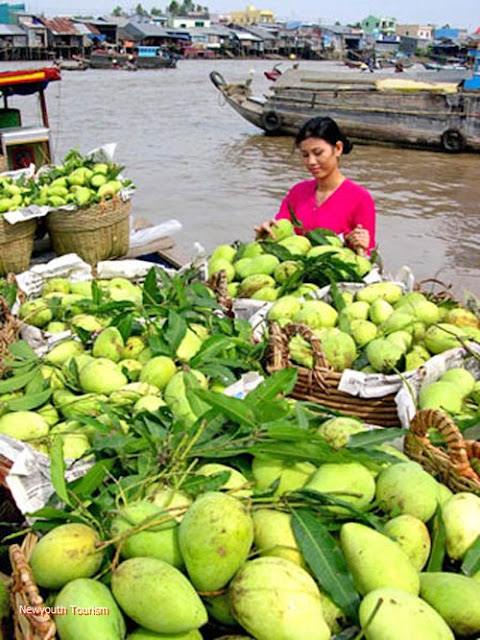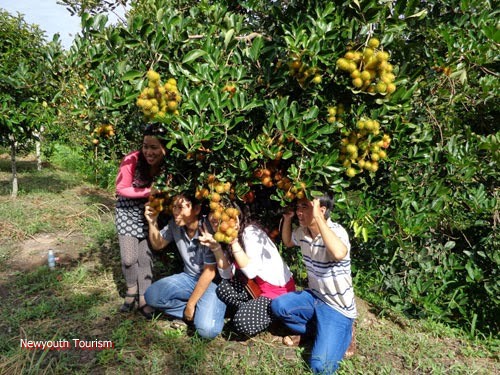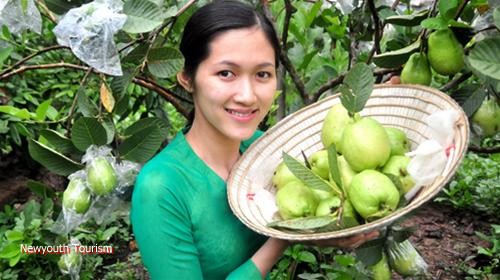Being geographically located in the tropical zone,
Vietnam is truly a heaven of various kinds of fruit. First-time visitors to the
country will be amazed at the countless number of colourful fruits sold at
reasonable prices in every street and market all year round.
Southern Vietnam is the largest producer of fruit in the whole country, since the region’s weather is warm with long hours of sunshine, high average temperatures and humidity all year.
As summer approaches, the annual Fruits Festival is held
in Ho Chi Minh City , attracting millions of visitors, locals and foreigners
alike. It contributes to promoting tourism and links between farmers and
processors in the southern provinces.
The festival is a rendezvous for many kinds of fruit
from the region, from popular varieties to specialities that become the trade
name of planters.
In the western southern region, there are even tours
arranged exclusively for tourists who love visiting orchards where they can
witness how the fruits are grown and try fresh produce.
“I like many various kinds of Vietnamese fruit,
especially mango because of its natural aroma and sweetness. However, I don’t
like durian because it smells terrible,” said Thomas, a German visitor.
Like Thomas, many other visitors think durian smells to
high heaven, but it is a favourite fruit in southern Vietnam . Durian is grown
mainly in the provinces of Tien Giang, Ben Tre, Dong Nai and Can Tho city.
Durian has a special and tempting smell. People who have
not enjoyed the fruit before may find it hard to eat. But once they have tried
it, they are likely to seek it again.
The delicious and natural taste of durian and other
fruits have lured the increasing interest of tourists as they were displayed in
boats and dinghies, a popular mode of transport on the waterways in the area.
Rambutan is grown in most of the localities in the
region. It is cultivated in hot and wet areas. With two harvests every year,
each rambutan tree can generate 60-70 kilograms of fruit per crop. With a high
nutritional value and its delicious taste, the fruit is sold in not only the
domestic market, but is also one of the major exports of the country.
With its natural colour and attractive appearance, Thanh
Long (dragon fruit) has a solid position in demanding import markets. In the
past, the fruit was planted mainly in the central province of Binh Thuan , now
it is grown in many localities in the south.
Different from any other southern fruit, its harvest
season is distinct; fruits become available in markets in October, November,
April and May. They are more expensive in October and April, since there are
smaller quantities available. The export of fruit has brought a prosperous life
for many farmers in the region.
To create succulent and safe produce, farmers are widely
applying modern cultivation models in accordance with domestic and
international standards.
Nam Roi grapefruit is one of Vietnam’s first fruits to
be granted a certificate of compliance with the Global Good Agricultural
Practices (Global Gap) standard.
Many localities in the south have also developed their
fruit-planting areas into eco-tourism sites. The action both contributes to
promoting the trade name of Vietnamese fruit and attracts more tourists to the
region.
































.jpg)

0 nhận xét: